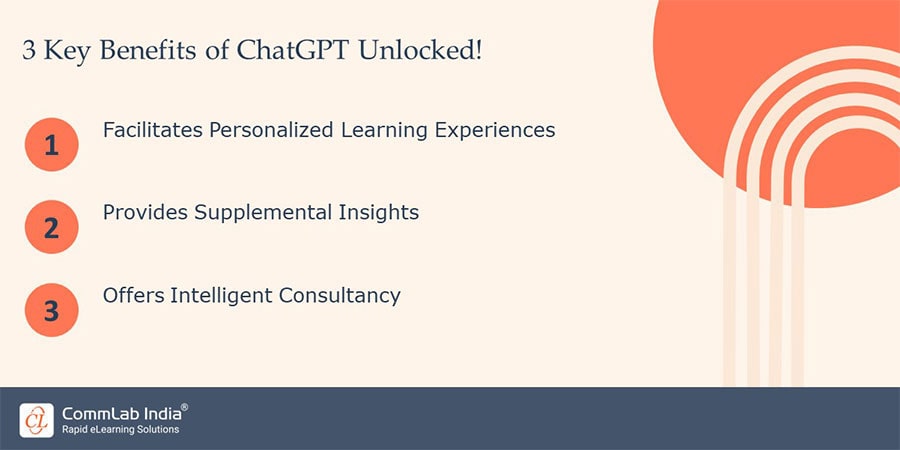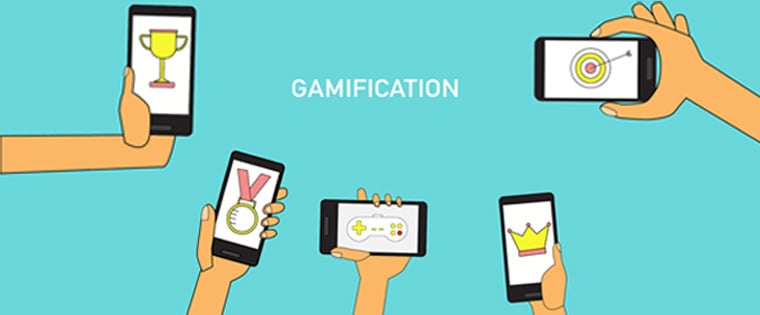ChatGPT, Google Gemini, and Microsoft Co-Pilot: The Dynamic AI Trio for eLearning
This blog introduces ChatGPT, Google Gemini, and Microsoft Co-Pilot as powerful AI language models with the potential to revolutionize eLearning.

ELearning has become integral to the world of corporate training. It offers flexibility, and accessibility, and caters to diverse learning styles. However, designing truly engaging and effective eLearning experiences remains a challenge. This is where advanced artificial intelligence (AI) language models like ChatGPT, Google Gemini, and Microsoft Co-Pilot emerge as transformative tools. These AI powerhouses are poised to revolutionize the way we create and deliver online learning.
Want to Revolutionize eLearning? Try AI Language Models!
Here are the 3 popular ones mentioned in the blog -
- ChatGPT
- Google Gemini
- Microsoft Co-Pilot
Read on to understand how they can help you with eLearning design and development.
What are The Key Capabilities and Features of The AI Trio?
ChatGPT: The Conversational Genius
ChatGPT excels in generating remarkably human-like text. It can write different kinds of creative content, translate between languages, and engage in fluid conversations. In eLearning, ChatGPT can power interactive learning experiences. Imagine AI-driven virtual tutors, personalized feedback systems for assignments, or even engaging dialogue-based simulations to practice complex skills.

Google Gemini: The Knowledge Master
Google Gemini boasts superior informational understanding. It can process vast amounts of information and present accurate, concise summaries. For eLearning, Gemini can transform content creation. It can curate resources, generate comprehensive learning modules, and ensure the factual accuracy of educational materials. Think of it as a super-efficient research assistant for instructional designers.
Microsoft Co-Pilot: The Productivity Powerhouse
Co-Pilot's strength lies in its seamless integration with Microsoft's suite of tools (Word, PowerPoint, etc.). It simplifies the process of designing visually appealing and well-structured eLearning content. With Co-Pilot, imagine generating slide decks, lesson outlines, and even basic interactions with minimal effort. It streamlines the workflow, allowing trainers to focus more on the quality of instruction rather than the mechanics of content creation.
→ Download eBook Now: How To Use ChatGPT
How can This AI Trio Transform eLearning Design and Development?
1. Adaptive Learning Paths: The AI-Powered Personalization
AI systems analyze a wealth of learner data, including quiz scores, content interaction time, written responses, and even areas where the learner frequently pauses or rewinds videos. Using this analysis, AI adapts learning experiences through dynamic difficulty adjustments in practice activities, offering branching pathways with additional resources or simpler explanations based on identified knowledge gaps, and recommending supplementary content aligned with the learner's interests or demonstrated strengths.

2. Intelligent Virtual Tutors: Your 24/7 Learning Companion
AI-powered tutors possess a deep understanding of the subject matter and can break down complex concepts in various ways. They engage in two-way conversations with learners, asking clarifying questions to pinpoint the source of confusion. Tutors offer step-by-step guidance without directly giving answers, encouraging learners to think through problems independently. Then, they can provide targeted feedback on assignments, suggesting areas for improvement and highlighting specific strengths.
3. Automated Content Generation: Saving Time for Better Design
AI tools can rapidly process vast amounts of information and streamline basic content creation tasks like:
- Generating comprehensive lesson outlines that encompass key objectives and essential topics.
- Compiling initial drafts of scripts for explainer videos, saving instructors significant writing time.
- Designing basic knowledge-check quizzes with a mix of question formats (multiple-choice, true-false, fill-in-the-blank).
Here’s a short video to help you explore a few more AI tools that can help you with eLearning design and development.
Addressing Challenges and Considerations
Accuracy and Bias: The Need for Vigilance
AI models are trained on large datasets that may contain inaccuracies or reflect existing biases. It's crucial to fact-check all AI-generated content, ensuring the information is correct, up-to-date, and free from harmful stereotypes or misleading perspectives. Trainers must continuously fine-tune the AI models they use, identifying and addressing areas where inaccuracies or biases might surface.
Over-reliance on AI: Maintaining the Human Touch
AI excels at efficiency but cannot replace the intuition, empathy, and creativity of human instructors. Trainers are essential in designing assessments that measure critical thinking, complex problem-solving, and nuanced communication that AI may struggle to evaluate. Fostering learner-instructor relationships and social learning elements is crucial, as AI cannot fully replicate the benefits of human connection in the learning process.
What is The Future of eLearning with AI?
1. Gamified and Immersive Experiences: Learning through Play
AI will power hyper-realistic simulations, placing learners in the heart of historical events, complex scientific experiments, or challenging business scenarios. Game-like elements will drive engagement, including branching narratives where choices have consequences, point systems, badges, and personalized challenges. These immersive experiences will transform learning from passive information absorption to active, experiential discovery.
2. Collaborative Learning: Powered by AI Facilitation
AI tools will analyze group interactions in online discussions, identifying students who might be struggling to participate and offering personalized prompts to encourage contributions. They can mediate group projects, monitoring progress, suggesting resources, and flagging potential conflicts or misunderstandings early on. AI-assisted feedback will analyze team dynamics and contributions, providing insights for both individuals and the group as a whole to improve collaboration.
3. Accessible and Inclusive eLearning: Breaking Barriers
AI-powered real-time translation will eliminate language barriers, allowing learners worldwide to access the same high-quality learning materials. Automated captioning and transcription, enhanced by AI, will ensure accessibility for the hearing impaired. Adaptive interfaces will personalize the learning experience for learners with various disabilities, adjusting font size, color schemes, navigation, and interaction modes.
Wrapping Up!
ChatGPT, Google Gemini, and Microsoft Co-Pilot are the vanguards of a revolution in eLearning design. Their ability to personalize learning, offer on-demand support, and streamline content creation has the potential to make training more engaging, efficient, and inclusive for all types of learners. The responsible integration of AI, coupled with the continued leadership of passionate trainers, holds the key to unlocking a future where eLearning empowers learners to reach their full potential. As a bonus, here’s an eBook to help you understand more about ChatGPT. Download it now!





